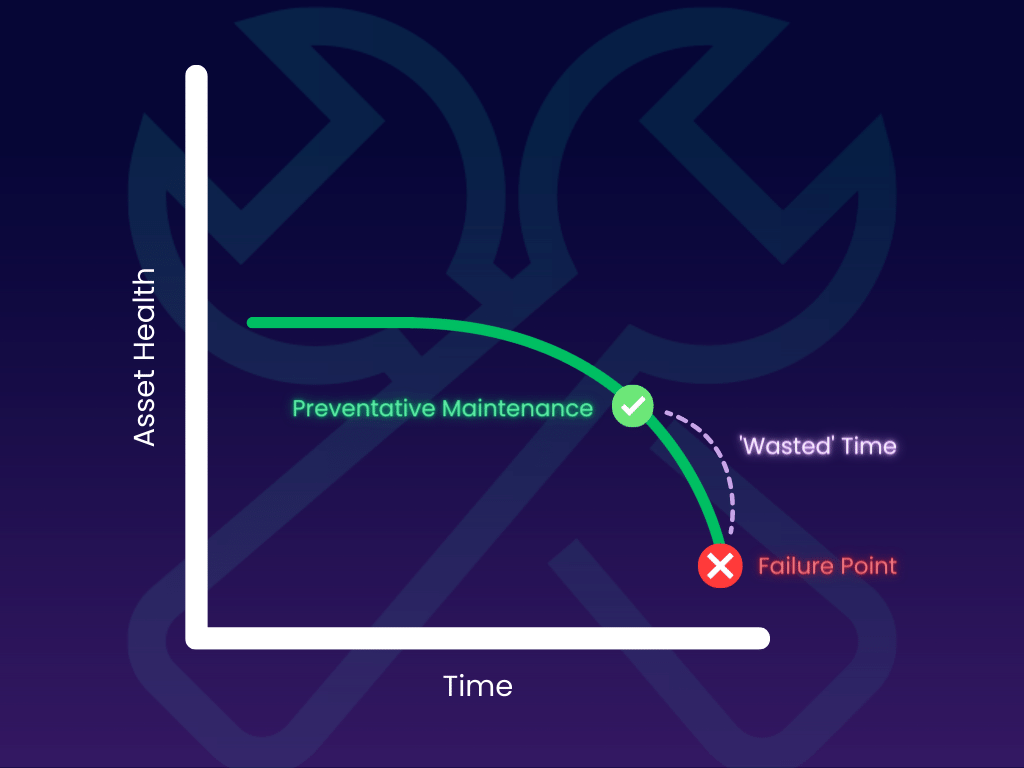Transforming Airport Operations: AI for Facilities Management
This article originally appeared in Aviation Pros.
5 min read
 Konnor Baskaran
Apr 22, 2024 1:43:35 PM
Konnor Baskaran
Apr 22, 2024 1:43:35 PM

The latest workflow and process automation software and new innovations in internet of things (IoT) sensors and cameras are revolutionising the facilities management (FM) sector. Specifically, these technologies are enabling facilities managers in the catering and hospitality sectors to achieve smarter, more dynamic cleaning rotas and workflows: essentially cleaning restaurants, kitchens, toilets, and buildings faster, better, and easier than ever before, at lower cost and with less resources.
However, while it is widely accepted that digitalisation in FM is the next logical step, there is still a bigger problem across the industry. Where to start?
That’s because digitalisation can be a daunting project for many, both in terms of the implementation of new technologies, and in terms of making a compelling business case with a significant return on investment.
What, for example, do we mean by ‘smart’ or ‘dynamic’ cleaning? And what do you need to know about the software and the IoT cameras and sensor hardware that is powering this revolution? In this article, I will explain everything that cleaning companies and facilities managers need to know about both things in clear, non-technical language.
What is smart or dynamic cleaning?
Firstly, let’s consider exactly what we mean when we talk about smart or dynamic cleaning. Definitions of dynamic cleaning vary, but they all boil down to this one simple maxim: find ways to work smarter, not harder.
Some of the world’s biggest and most successful facilities management operators are investing a lot of time and resources into developing innovative new approaches to cleaning, using real-time data, mobile ‘process management’ apps and IoT devices.
Dynamic cleaning that utilises real-time data and intelligent automation can not only make your operations more efficient but allow you to win new business and assure your customers that you are using your time to get them the best possible results. Which is an obvious win for all involved!
Cleaning companies can cut costs and improve the quality of their delivery, while customers enjoy better value and higher standards, and cleaners themselves are under less pressure as they have very clear direction on where to focus their efforts and maximise their productivity.
But what kind of real-time data are we talking about here? This could be data or information gathered from apps on cleaning staff’s smartphones or from internet-connected cameras and sensors installed across restaurants, kitchens, toilets, or other key points in any building that requires regular cleaning.
And what type of apps? Any well-designed process management app or workflow automation software platform needs to achieve two things. Firstly, it will be designed to help cleaning and FM companies do ‘more for less’: improve service levels, while cutting costs and still being able to demonstrate value for money to their customers. Secondly, and perhaps most importantly, it must be user-friendly: that is, it needs to give a cleaner, or an FM supervisor very clear, actionable instructions on what they need to do next.
What sort of IoT devices do I need?
Major IoT camera and sensor device manufacturers such as Cisco Meraki and others are developing valuable and strategic partnerships with software and app developers to offer FM companies, or hospitality and catering businesses, innovative new ways to provide sensor-driven cleaning workflows.
Combining IoT cameras and sensors with a good process management app essentially means that cleaning teams can work to demand, cleaning rooms and spaces as and when they need it, as opposed to sticking to rigid cleaning schedules. Which immediately leads to significant increases in cleaning productivity.
This type of reactive cleaning means that a cleaning action can be triggered every time that a particular room, zone, or prepping station has been used “X” number of times, for example. Empowering cleaners to work in response to usage and demand, ensuring a high level of service that’s also extremely efficient.
Cleaning to demand allows for far more efficient cleaning teams, and far less spend, because FM companies or hospitality and catering businesses only pay for the resource they need. Which is basically what IoT and process management app developers mean when they talk about ‘leveraging’ real-time data to achieve measurable, day-to-day operational efficiencies.
What does a good process management app do?
Process management apps have, of course, been available for some time. But in many cases, rigid structures and uniform templates haven’t previously met the needs of those cleaning or facilities management teams that require unique workflows, specific tech stack integrations and distinct user interfaces, data visualisations and a high level of customisation and flexibility.
Today’s best process management apps not only offer all these benefits, but they also integrate easily with IoT cameras or sensors. Which means, for example, that a specific cleaning job can be triggered automatically by ‘smart’ kitchens, restaurants, toilets, and other areas across your estate.
This type of dynamic cleaning, achieved by an intelligent deployment of a process management app combined with a well-placed network of IoT sensors, is capable of fundamentally altering your entire approach to cleaning.
Your network of IoT sensors might include PIR (person in room), footfall, door open, or zone occupancy sensors – all of which can automatically identify areas that have seen heavy usage, triggering your process management app to direct cleaners to where they are needed.
Plus, supplementing these automated sensor-triggered cleaning actions, you can also add an IoT call button, which enables any of your staff or a building’s occupants to alert the cleaning team immediately when they notice a clean is needed.
In addition to automating your cleaning workflows in these ways, a good process management app will also have a unifying effect on all facets of your operations. Meaning that the software can also be used for operations, audits, reporting and compliance – and all this resulting data can be used to better guide future operations.
To put it as simply as possible, a good process management app creates a feedback loop: where data drives your working patterns and your work helps to build up a detailed picture of your cleaning and FM challenges and successes.
Artificial cleaning intelligence in action
Artificial intelligence (AI) has rapidly become the tech industry buzzword of the moment, following the launch of large language model (LLM) apps such as the Microsoft-backed ChatGPT and Google’s LaMDA in 2023.
In the world of AI, automation, IOT and more, leveraging technology and analytics in facilities management has never been more critical. Integrating these advanced technologies can increase operational efficiencies, ensure compliance, drive scalability, and provide accurate data analysis to measure it all.
For many in the hospitality and catering sectors, leveraging AI as part of a wider digitalisation push might seem like quite a confusing or abstract concept. But the process is actually quite simple.
It’s firstly about gathering and using data to ensure that your operations are dynamically optimised, in the ways I’ve explained above. After all, any AI technology is only as good as the data that is fed into it, so the key is to start to collect far more detailed data on everything. Which might involve auditing individual locations and the cleaning input hours across the same areas, for example.
Secondly, it’s about using a process management app to make some practical sense of all this data you are now collecting – to basically extract value from this mass of raw data - whether that is coming in from remote IoT sensors, or directly from employees using the app in their day-to-day work.
An AI-driven process management app will not only guide your cleaning staff through their key tasks and direct them to ad hoc jobs, as and when needed, it will also act as a central command hub from which workflows, audits, sensor feeds gather, and reports can be created.
It is the detailed reporting capabilities of a smart process management app and platform that make it such a compelling solution for facilities managers in the catering and hospitality sectors. That’s because, over time, the software will make sense of all your data and then be able to provide valuable business information to enable you to constantly make improvements in the level of service you offer, achieve new efficiencies, and always keep costs under control.
Ultimately, cleaner restaurants, kitchens, toilets, and buildings are a key factor for customers deciding whether they want to return, or to recommend your business to others.
There are many aspects to dynamic cleaning, but to create reactive, efficient teams that can also deliver a higher quality of service, you need to make a smart investment in a digital platform that can help to automate and deliver real-time feedback to teams and gather the information you need to really understand and improve your operations.

This article originally appeared in Aviation Pros.
Dynamic cleaning that utilises real-time data and intelligent automation can not only make your operations more efficient but allow you to win new...

In this blog we will explain what the three main kinds of maintenance are - reactive, preventative and predictive.